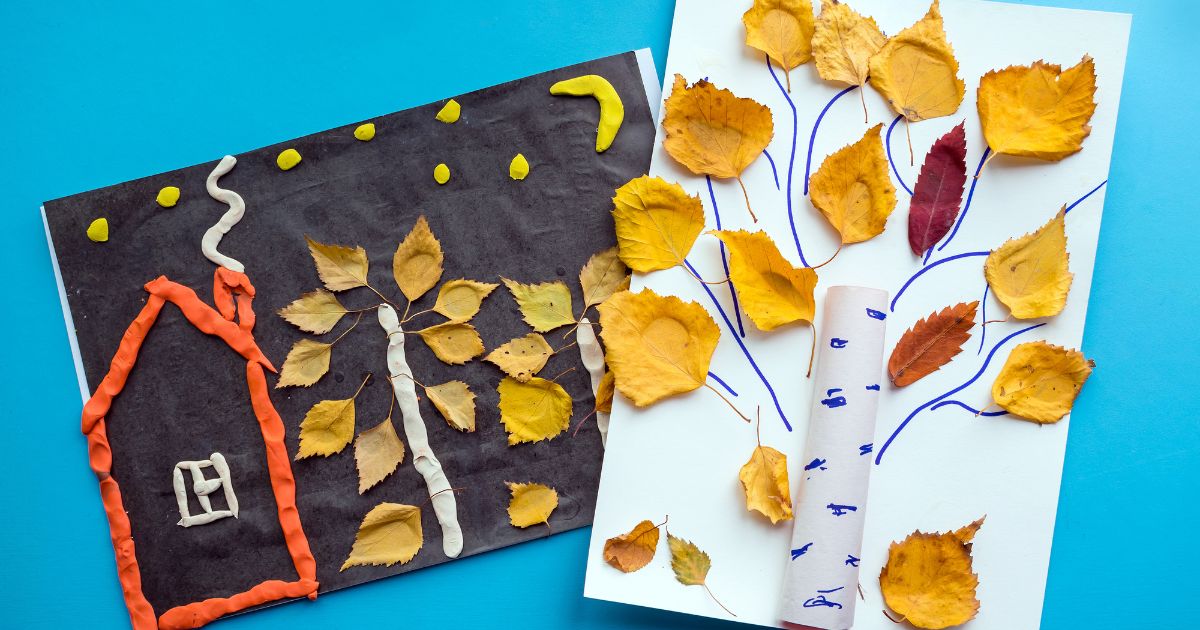Autumn is a season full of change, color, and inspiration, making it a fantastic time to bring creative and engaging activities into your homeschool classroom. Fall homeschool activities not only connect children to the beauty of the season but also provide meaningful opportunities for learning across various subjects. From science experiments to art projects, the possibilities are endless.
Below, we’ll explore four key sections of autumn classroom ideas and seasonal homeschool projects to help you make the most of this vibrant time of year.
1. Exploring Nature With Hands-On Fall Projects
Autumn is the perfect time to take homeschool lessons outdoors and incorporate the natural world into your curriculum. The changes in the season provide plenty of material for science, art, and even math lessons.
Nature Walk Scavenger Hunt
A nature walk is a simple yet highly effective way to engage children in the wonders of fall. You can design a scavenger hunt to sharpen observational skills while teaching about plants, trees, and animals. Create a checklist of seasonal items for children to find, such as:
- Different types of leaves (oak, maple, etc.)
- Acorns, pinecones, or chestnuts
- Squirrels or other wildlife active in the fall
- Mushrooms or fungi
- Signs of animal preparation for winter (nesting, storing food, etc.)
After the walk, bring the items home or take photos to use them in a follow-up project. For example, press the leaves into a nature journal and have your child research each species they collected.
Leaf Art and Classification
Leaves are not just beautiful; they also offer endless possibilities for educational activities. Here are some ideas:
- Rubbings: Use crayons and paper to create rubbings of different leaves. Discuss the textures and patterns as part of an art-science crossover lesson.
- Identification Charts: Teach kids to identify tree types by their leaves. Print or create a guide that matches the leaves they’ve collected during your nature walk.
- Leaf Graphing Activity: Turn a math lesson into something tactile by creating a bar graph or pie chart showing the different types of leaves your child collected.
Studying Seasonal Changes
Get into the science of autumn by observing and discussing how animals and plants adapt to the season. Set up experiments to track changes in plant life or the weather. For instance:
- Tracking Temperature: Chart daily highs and lows and calculate the average temperature for the week.
- Decomposing Leaves Experiment: Collect wet and dry leaves, place them in jars, and observe how they decompose over time. Discuss why the process is slower or faster in different conditions.
These activities not only incorporate STEM learning but also encourage children to think critically and ask questions about the world around them.

2. Creative Arts And Crafts With An Autumn Twist
Fall provides plenty of inspiration for hands-on creativity. Arts and crafts allow children to express themselves while developing fine motor skills. Best of all, these projects can tie directly into holiday preparations or seasonal decorations.
DIY Autumn Wreaths
Making wreaths is an enjoyable activity for kids of all ages. Gather supplies like twigs, faux fall foliage, ribbons, or even real seasonal materials such as dried flowers and small pinecones. Once children assemble their wreaths, discuss symmetry and design principles.
Pumpkin-Themed Crafts
Pumpkins are more than a symbol of fall — they can also spark your child’s imagination. Here are some pumpkin-themed craft ideas:
- Pumpkin Painting: Skip the mess of carving and decorate pumpkins with paint, glitter, or other embellishments.
- Paper Plate Pumpkins: Use inexpensive paper plates, orange paint, and construction paper to create pumpkin designs with younger children.
- Pumpkin Seed Art: After carving a pumpkin, save the seeds to glue onto paper in creative patterns, shapes, or designs.
Seasonal Banner or Garland
A simple fall banner made of construction paper, string, and markers can brighten up your homeschool space. Have kids cut out leaf shapes, pumpkins, or acorns and write an autumn-themed poem or message on each piece.
Thankful Trees
Combine art and gratitude with a “thankful tree” activity. Cut out a tree trunk from brown construction paper and add branches to a wall or bulletin board. Each day, children can write something they’re thankful for on a leaf cutout and attach it to the tree.
Creativity thrives when children are encouraged to explore the season using their hands and imaginations. These activities are ideal for both individual work and group settings.
3. Bringing Seasonal Studies Into Core Subjects
Autumn’s unique themes can enrich lessons in math, history, and literature, making traditional subjects more exciting and relevant for kids.
Seasonal Math Activities
Math might not be the first subject that comes to mind when thinking about fall, but the season offers great opportunities to teach concepts like measurement, patterns, and data collection.
- Measuring Pumpkins: Gather several pumpkins of various sizes and have children measure their circumference, height, and weight. Younger kids can estimate first and compare their guesses to the actual measurements.
- Fall Story Problems: Create math word problems rooted in autumn scenarios. For example, “A farmer harvests 10 pumpkins and sells 6. How many does he have left?”
- Pattern Activities: Use acorns, candy corn, or leaves to teach kids about creating and recognizing patterns.
Literature Themes for Autumn
Bring the cozy feeling of fall into your literature studies. Read seasonal classics that highlight autumn themes, like The Legend of Sleepy Hollow for older kids or Leaf Man for younger ones. Afterward:
- Creative Writing Prompts: Ask your child to write their own autumn-themed story. For example, they could create a narrative about a squirrel’s quest to collect enough acorns for winter.
- Book Reports with a Twist: Encourage them to write a book report and then present it as a skit, art project, or diorama with a fall background.
History Through Fall Traditions
Autumn holidays like Halloween and Thanksgiving provide an excellent opportunity to teach historical lessons. Explore questions like:
- How did Native Americans and early settlers prepare for and celebrate harvests?
- What is the history of Halloween traditions around the world?
- How has agriculture evolved over the centuries to accommodate modern harvest seasons?
Link history lessons to hands-on activities — for example, baking traditional bread recipes used during early harvest festivals.
4. Baking And Cooking For Fall Learning
Few things embody fall more than hearty, warm meals and snacks. Cooking not only teaches practical life skills but also integrates lessons in science, math, and cultural studies. Plus, it’s delicious!
Easy Recipes for Kids
Choose simple recipes that kids can participate in from start to finish:
- Apple Cider or Hot Chocolate: Teach measuring skills while preparing classic seasonal drinks.
- Pumpkin Muffins or Cookies: Practice math skills by doubling or halving recipes.
- Roasted Pumpkin Seeds: Show kids how they can use ingredients they already have — like seeds from a carved pumpkin!
Harvest-Themed Meals
Plan a homeschool “harvest day” where the whole family works together to create a meal inspired by seasonal ingredients.
- Discuss the origins of ingredients, from apples to butternut squash.
- Have children write a menu or create place cards for the table.
- Practice manners and historical discussions while enjoying the meal.
The Science of Cooking
Turn cooking into a science experiment by discussing how ingredients work together. For instance:
- Teach about the chemical reaction between baking soda and vinegar in baked goods.
- Explore how yeast works while making bread.
- Observe how sugar caramelizes at different temperatures.
Cooking ties life lessons into the classroom in ways that are both tangible and memorable. It’s hands-on learning at its tastiest!
Fall homeschool projects allow parents to infuse seasonal excitement into everyday lessons. By incorporating nature, crafts, core subjects, and cooking, you’ll not only spark curiosity but also help children build a deeper connection to the world around them. Engage your family with these activities, and watch your homeschool classroom come alive with the colors and warmth of autumn.



